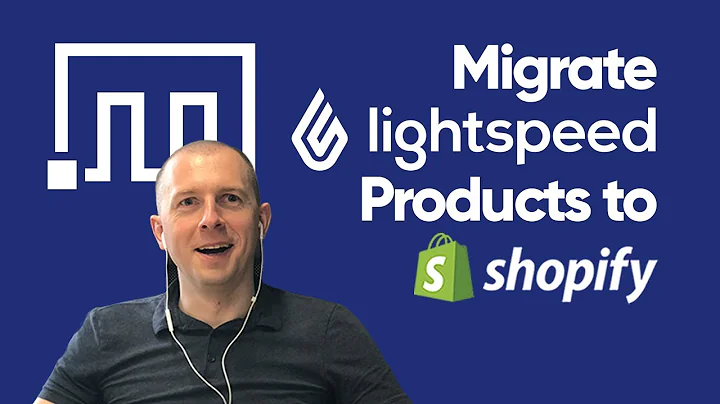Mastering Lists and Segments in Klaviyo
Table of Contents
- Introduction
- What are Lists and Segments in Klaviyo?
- Lists: Creating and Managing Subscribers
- Segments: Deepening Subscriber Understanding
- Ways to Segment Subscribers
- Demo: Creating a Segment in Klaviyo
- Using Segments in Campaigns
- Pros and Cons of Using Lists
- Pros and Cons of Using Segments
- Conclusion
Article
Introduction
In the world of email marketing, Klaviyo is a powerful tool that helps e-commerce brands grow through email and automated marketing. One of the most sought-after topics in Klaviyo is understanding and utilizing lists and segments. In this article, we will explore what lists and segments are and when to use them. We will delve into the differences between lists and segments, how to create and manage subscribers in lists, and how to deepen subscriber understanding through segments. Whether you are new to Klaviyo or an experienced user, this guide will provide valuable insights into using lists and segments effectively for your email marketing campaigns.
What are Lists and Segments in Klaviyo?
Lists and segments are two key components in Klaviyo that allow you to organize and target your subscribers effectively. While they may appear similar at first glance, they serve different purposes and offer distinct features. Lists are essentially buckets where you can add subscribers. Subscribers can join a list through various channels such as website forms, pop-ups, competitions, or importing directly. On the other hand, segments allow you to delve deeper into your subscribers' behavior and target them with precision. Unlike lists, segments are not limited to a specific list but can be pulled from across your entire account. Understanding how lists and segments work is crucial for optimizing your email marketing strategy.
Lists: Creating and Managing Subscribers
Setting up lists in Klaviyo is a straightforward process. Under the "Lists & Segments" section, you can create a list by clicking on "Create List." Give your list a name and you're ready to go. Lists should be strategically used for specific purposes, such as sign-up offers, checkout connections, or newsletter subscribers. For example, it is recommended to have separate lists for sign-up offers, checkout connections, and other subscribers. This organization ensures targeted communication and allows for smoother management. While lists are considered static, subscribers are added when they subscribe and removed when they unsubscribe. Keeping your lists organized and updated is crucial for effective email marketing campaigns.
Segments: Deepening Subscriber Understanding
Segments take subscriber targeting to the next level. They allow you to analyze and understand your subscribers' behavior and preferences in-depth. Klaviyo offers several ways to segment your subscribers. Firstly, you can segment based on actions they have or haven't taken, such as making a purchase, clicking on emails, or browsing specific products. Secondly, segmentation can be done based on profile properties, including location, name, and even birthday. Lastly, Klaviyo's predictive analytics provides the ability to segment based on predicted behaviors or attributes. For example, Klaviyo can predict gender based on first names or even churn rate likelihood and likely next purchase date. This level of segmentation allows for highly targeted and personalized email marketing campaigns.
Ways to Segment Subscribers
Segmenting subscribers effectively requires understanding the different ways in which you can segment them. By leveraging the available segmentation options in Klaviyo, you can tailor your email campaigns to specific groups. Some common ways to segment subscribers include:
- Based on actions they've taken: Segment subscribers who have made a purchase, clicked on specific emails, or engaged in certain behaviors.
- Based on profile properties: Segment subscribers by location, name, birthday, or any other relevant profile information.
- Based on predictive analytics: Utilize Klaviyo's predictive analytics to segment subscribers based on predicted gender, churn rate, or likely next purchase date.
By combining these segmentation options, you can create highly targeted segments that yield better engagement and conversion rates.
Demo: Creating a Segment in Klaviyo
Let's walk through a demo on how to create a segment within Klaviyo. In the "Lists & Segments" section, click on "Create List or Segment" and choose "Segment." Suppose you are a Californian brand aiming to win back disengaged customers by offering a discount. You can create a segment for Californian women who haven't purchased recently. By combining different rules, such as their order history, location, and predictive analytics, you can create a segment that precisely targets your desired audience. Klaviyo's intuitive interface makes it easy to set up and manage segments, allowing you to refine your email marketing strategy for maximum impact.
Using Segments in Campaigns
When it comes to creating email campaigns, considering whether the content is relevant to all subscribers or just a subset is crucial. If your content is targeted to a specific subset of subscribers, using segments is the way to go. On the other hand, if your content is intended for all subscribers, using lists will suffice. Segments allow you to combine multiple lists into one and create highly tailored audiences. This level of personalization leads to better engagement and conversion rates. Additionally, segments can be effectively utilized for Facebook audiences, allowing for more granular and targeted campaigns. Incorporating segments into your email marketing campaigns will yield better results and enhance your overall marketing strategy.
Pros and Cons of Using Lists
Using lists in Klaviyo has its advantages and drawbacks. Understanding the pros and cons will help you make informed decisions regarding your email marketing strategy.
Pros:
- Easy to set up and manage.
- Effective for organizing subscribers based on specific purposes.
- Suitable for campaigns targeting all subscribers.
- Ideal for triggering flows when creating signup forms.
Cons:
- Lists are considered static, and subscribers need to be removed manually.
- Limited flexibility compared to segments in terms of targeting and personalization.
- May lead to less precise targeting compared to segments.
Pros and Cons of Using Segments
Utilizing segments in Klaviyo offers unique advantages and disadvantages. Evaluating the pros and cons will help you determine when to leverage segments in your email marketing campaigns.
Pros:
- Allows for deep subscriber analysis and understanding.
- Enables precise targeting and personalization.
- Offers the flexibility to combine multiple lists into one segment.
- Highly effective for creating engaging and tailored campaigns.
Cons:
- Requires more comprehensive setup and management compared to lists.
- Segments may not calculate in real-time, resulting in potential delays.
- More complex to set up for triggering flows associated with signup forms.
Conclusion
Lists and segments are powerful tools in Klaviyo that enhance your email marketing strategy. Understanding the differences between lists and segments, and when to use each, is crucial for targeting your subscribers effectively. Lists provide an organized way to manage subscribers based on specific purposes, while segments allow for deeper analysis and highly personalized campaigns. By leveraging the segmentation options in Klaviyo, such as actions taken, profile properties, and predictive analytics, you can create targeted segments that yield better engagement and conversion rates. Incorporate segments into your email marketing campaigns and take your communication with subscribers to the next level.
Highlights
- Learn how to effectively use lists and segments in Klaviyo for email marketing campaigns.
- Understand the differences between lists and segments and when to use each.
- Create and manage subscribers in lists for specific purposes such as sign-up offers and checkout connections.
- Deepen subscriber understanding through segments and leverage various segmentation options available.
- Use segments to create highly targeted and personalized email campaigns for better engagement and conversion rates.
- Walkthrough demo on creating a segment in Klaviyo to precisely target desired audiences.
- Incorporate segments into campaigns for better results and enhance overall marketing strategy.
- Pros and cons of using lists and segments to make informed decisions.
- Enhance your email marketing strategy using Klaviyo's powerful list and segment features.
FAQs
Q: When should I use lists in Klaviyo?
A: Lists are ideal for organizing subscribers based on specific purposes. Use lists when creating sign-up forms and checkout connections. They are suitable for campaigns targeting all subscribers or triggering flows associated with sign-up forms.
Q: When should I use segments in Klaviyo?
A: Segments are recommended when you want to delve deeper into subscriber behavior and target them with precision. Use segments to create highly tailored campaigns, analyze subscriber actions, profile properties, and leverage predictive analytics.
Q: Can I combine multiple lists into one segment in Klaviyo?
A: Yes, Klaviyo allows you to combine multiple lists into one segment. This offers greater flexibility and personalization in your email marketing campaigns.
Q: Does using segments in Klaviyo yield better engagement and conversion rates?
A: Yes, by utilizing segments in your email campaigns, you can create targeted audiences and deliver personalized content. This leads to better engagement and higher conversion rates.
Q: What are the pros and cons of using lists in Klaviyo?
A: Pros of using lists include easy setup and management, effectiveness for organizing subscribers, and suitability for campaigns targeting all subscribers. Cons include static nature, manual removal of subscribers, and limited flexibility compared to segments.
Q: What are the pros and cons of using segments in Klaviyo?
A: Pros of using segments include deep subscriber analysis, precise targeting and personalization, flexibility to combine multiple lists, and effectiveness for tailored campaigns. Cons include more comprehensive setup and management, potential delays in calculations, and complexity for triggering flows associated with signup forms.






















